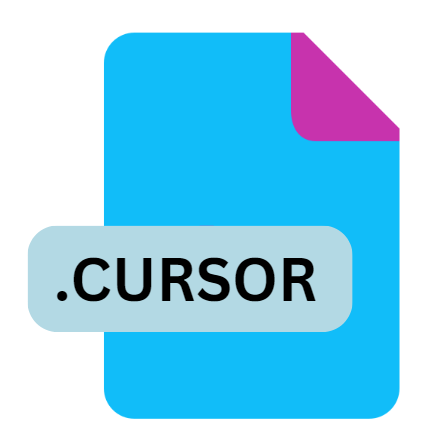.CURSOR File Extension

KDE Plasma Custom Cursor Specification
| Developer | KDE |
| Popularity | |
| Category | Settings Files |
| Format | .CURSOR |
| Cross Platform | Update Soon |
What is an CURSOR file?
The .CURSOR file extension is used by KDE Plasma, a popular desktop environment for Unix-like operating systems, to define custom cursors.
KDE Plasma offers extensive customization options, and custom cursors are one of the ways users can personalize their desktop experience.
The .CURSOR file format is part of the broader KDE ecosystem, which aims to provide a flexible and user-friendly interface for managing desktop environments.
More Information.
The .CURSOR file format was introduced as part of KDE Plasma’s customization framework to enhance the desktop environment’s aesthetics and usability.
Before the adoption of the .CURSOR format, KDE Plasma used standard X11 cursor files, which were limited in their capabilities.
Initially, KDE Plasma’s cursor customization was a basic feature, allowing users to switch between predefined cursor themes.
As KDE Plasma aimed to provide deeper customization options, the .CURSOR format was developed to offer a more detailed and modular approach to cursor themes.
The primary purpose of the .CURSOR file is to define a cursor theme that can be applied across the KDE Plasma desktop environment.
This includes specifying the appearance of cursors in different states and providing a means to package these cursors in a way that is both easy to use and consistent with the overall design philosophy of KDE Plasma.
Origin Of This File.
The .CURSOR file format emerged from KDE Plasma’s desire to provide users with an advanced level of customization. KDE, originally an acronym for “K Desktop Environment,” was first released in 1998 by the KDE Community.
It is renowned for its configurability and user-friendly features. As KDE Plasma evolved, so did its support for various user interface elements, including cursor themes.
The introduction of the .CURSOR file format was a response to the need for more advanced and flexible cursor management within KDE Plasma.
This format allows users to define their custom cursor schemes, which can include various cursor types and states, such as normal, busy, and text selection.
File Structure Technical Specification.
The .CURSOR file format is designed to be both flexible and extensible. Here’s a detailed look at its structure and technical specifications:
- File Format: .CURSOR files are essentially text files that follow a specific structure defined by KDE Plasma. They use a combination of configuration directives and metadata to define the cursor theme.
- Structure: The file consists of sections that define different aspects of the cursor theme:
- Header: Contains metadata about the cursor theme, including its name, author, and version.
- Cursors Section: Specifies the different cursors included in the theme, such as normal, busy, and text selection cursors. Each cursor is defined by a path to an image file and additional properties like size and hotspot position.
- Images Section: Provides paths to the images used for the cursors. These images are typically in PNG or SVG format and are referenced by the cursor definitions.
- Properties: Additional properties may include scaling options, fallback cursors, and other theme-specific settings.
- Technical Specification: The .CURSOR format uses a combination of text-based configuration and image files. The configuration is typically written in a human-readable format, such as INI-style syntax, which makes it easy to edit and customize. The image files are used to render the actual cursor graphics, and they need to be of appropriate size and resolution to ensure clarity and usability.
How to Convert the File?
Converting .CURSOR files to other formats is not typically required, as they are specific to KDE Plasma. If users want to use the images from a .CURSOR file in different contexts or desktop environments, they can manually extract and convert these images. Here’s a general approach:
- Extract Images: Open the .CURSOR file using a text editor to identify the paths to the image files. Copy these image files to a separate directory.
- Convert Images: Use an image conversion tool (e.g., GIMP, ImageMagick) to convert the images from their current format (e.g., PNG, SVG) to the desired format.
- Apply to Other Systems: For use in other desktop environments or operating systems, follow their specific procedures for importing or configuring cursor themes.
Advantages And Disadvantages.
Advantages:
- Customizability: The .CURSOR file format allows users to create highly personalized cursor themes. This enhances the visual appeal and user experience of the KDE Plasma desktop environment.
- Flexibility: Users can define cursors for various states and interactions, ensuring that the cursor behaves intuitively in different contexts.
- Integration: The format integrates seamlessly with KDE Plasma, providing a consistent and cohesive experience across the desktop environment.
Disadvantages:
- Complexity: For users unfamiliar with configuration files, creating and editing .CURSOR files can be complex. Understanding the format and ensuring proper file paths and settings require some technical knowledge.
- Compatibility: The .CURSOR file format is specific to KDE Plasma and may not be directly compatible with other desktop environments or operating systems. This limits its use to KDE Plasma users.
- Maintenance: Keeping cursor themes up to date with KDE Plasma’s evolving requirements and ensuring compatibility with different screen resolutions can be challenging.
How to Open CURSOR?
Open In Windows
- .CURSOR files are natively supported by Windows. To open or change the cursor, go to the Control Panel, navigate to the “Mouse” settings, and select the “Pointers” tab where you can customize the cursor.
Open In Linux
- The support for .CURSOR files varies by distribution and desktop environment. Tools like
Gnome Tweak ToolorKDE System Settingsmay allow cursor customization, but converting the .CURSOR file to a compatible format might be necessary.
Open In MAC
- macOS does not natively support .CURSOR files. To use custom cursors, you may need third-party applications or convert the .CURSOR file to a compatible format like
.PNGor.ICNS.












